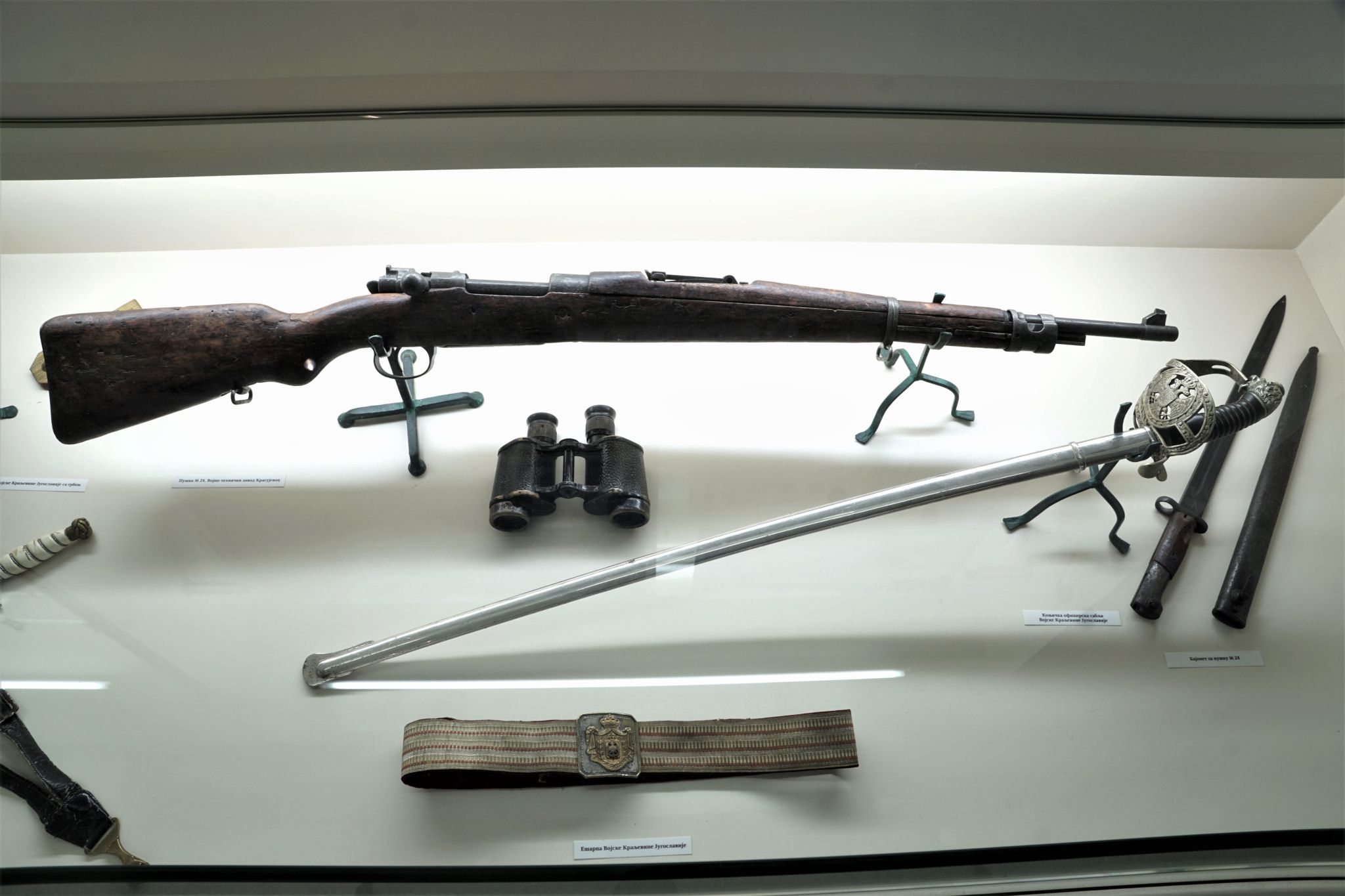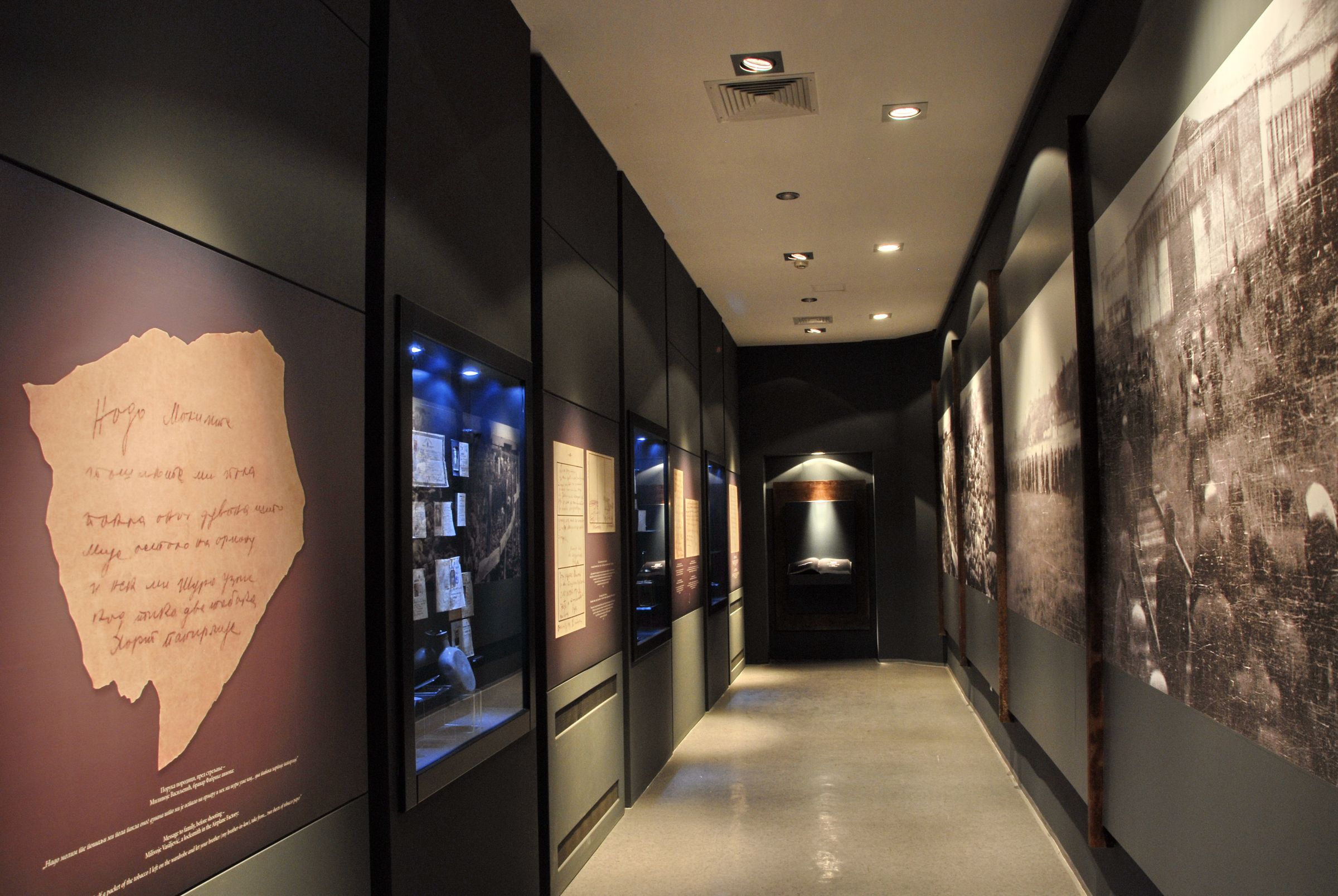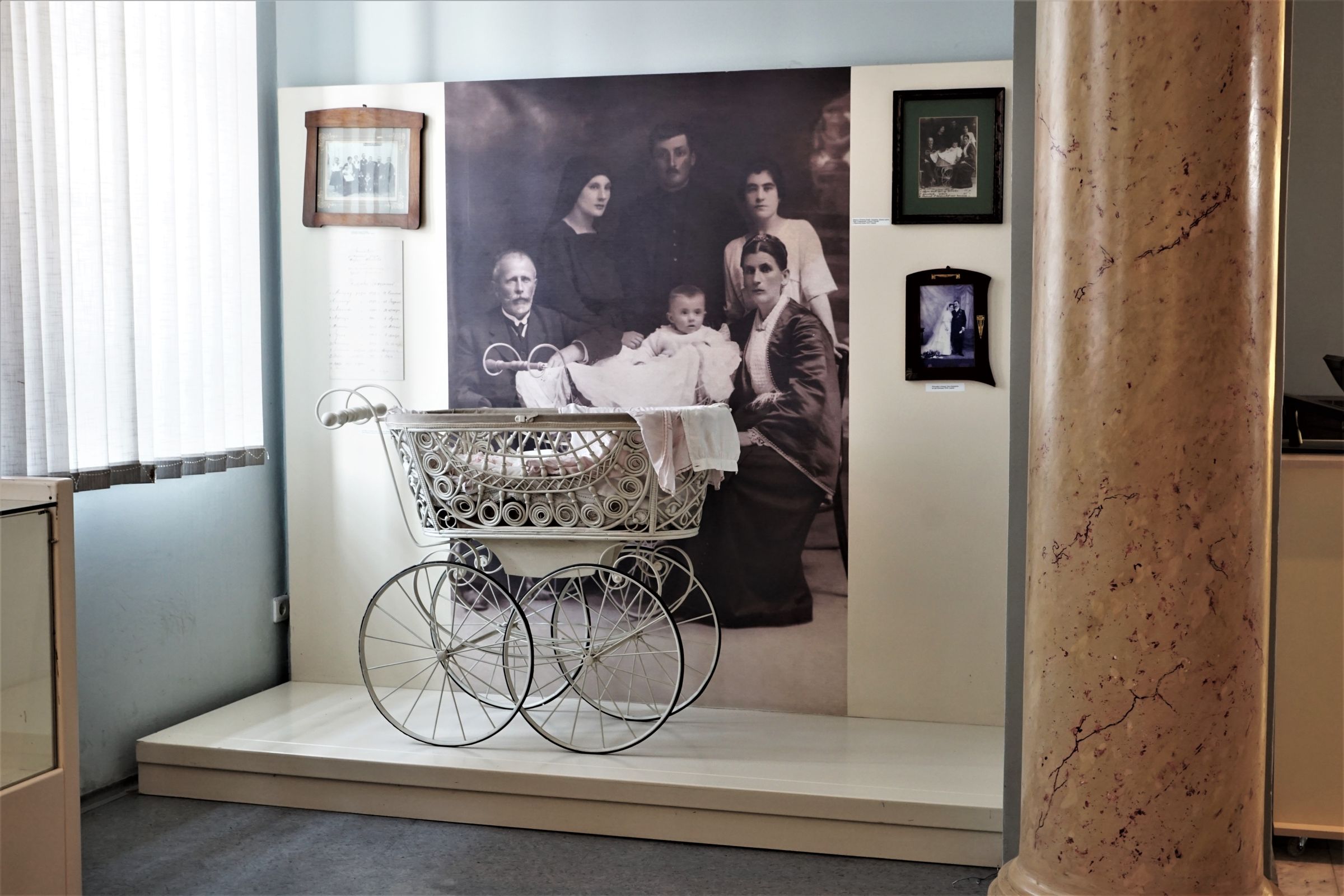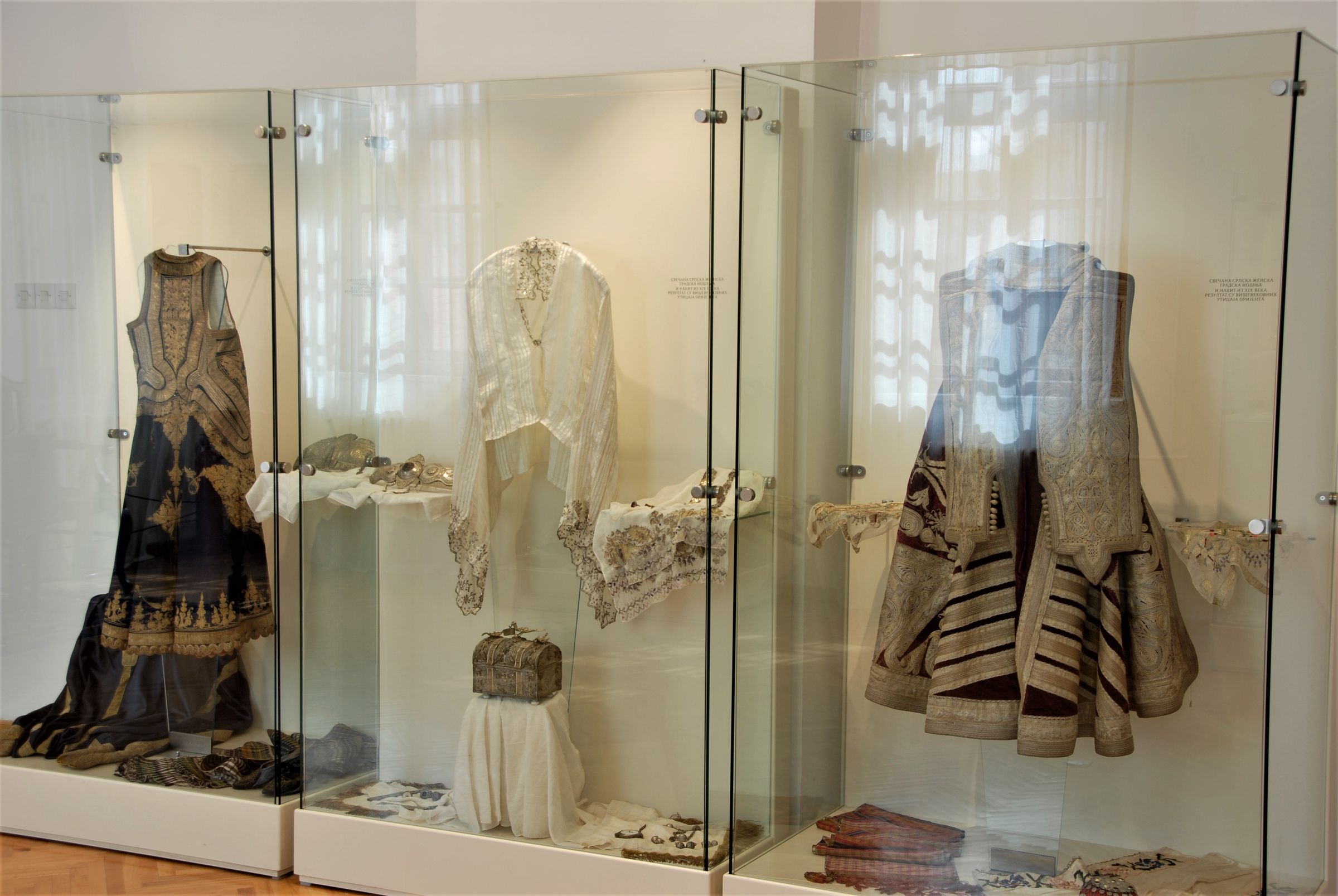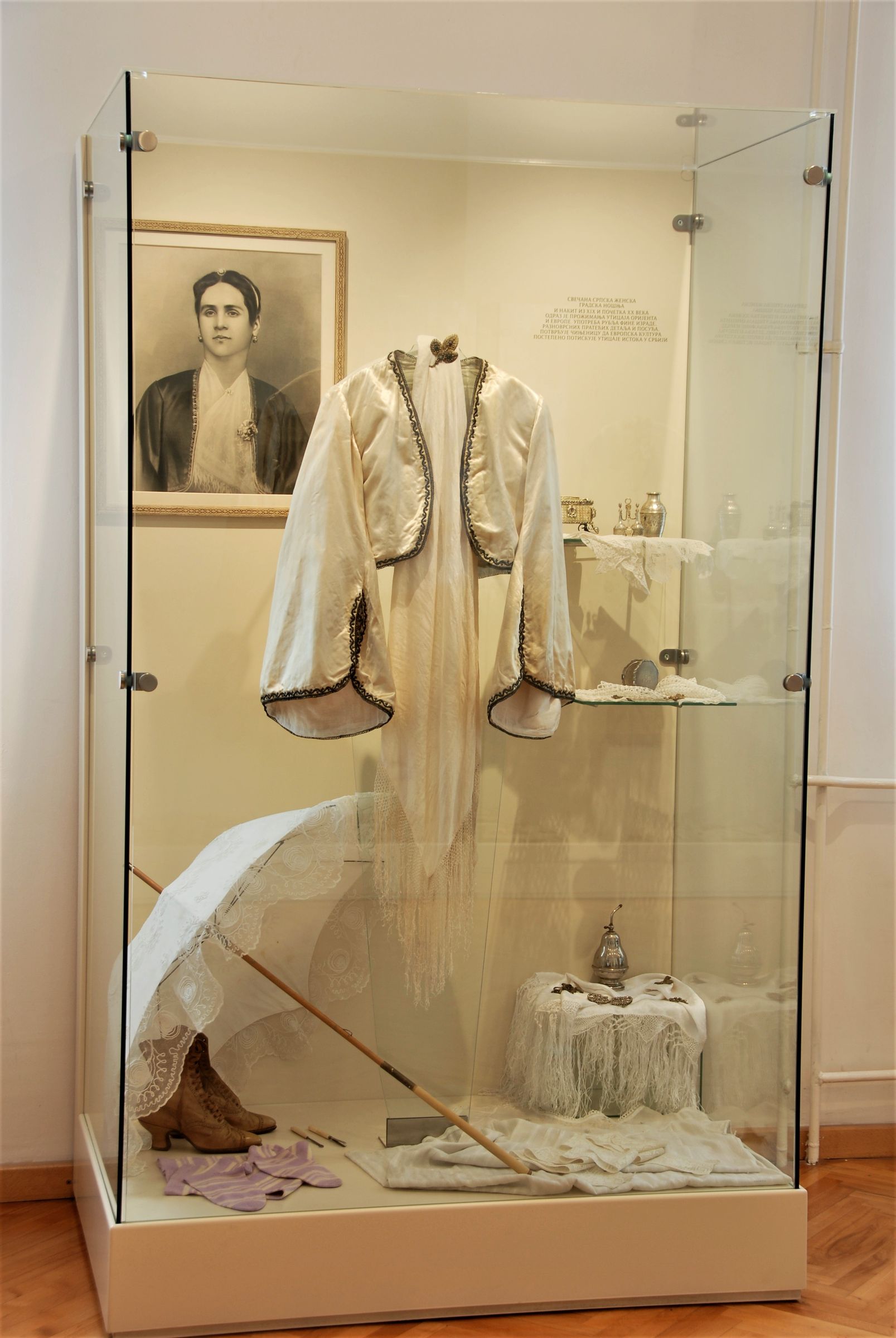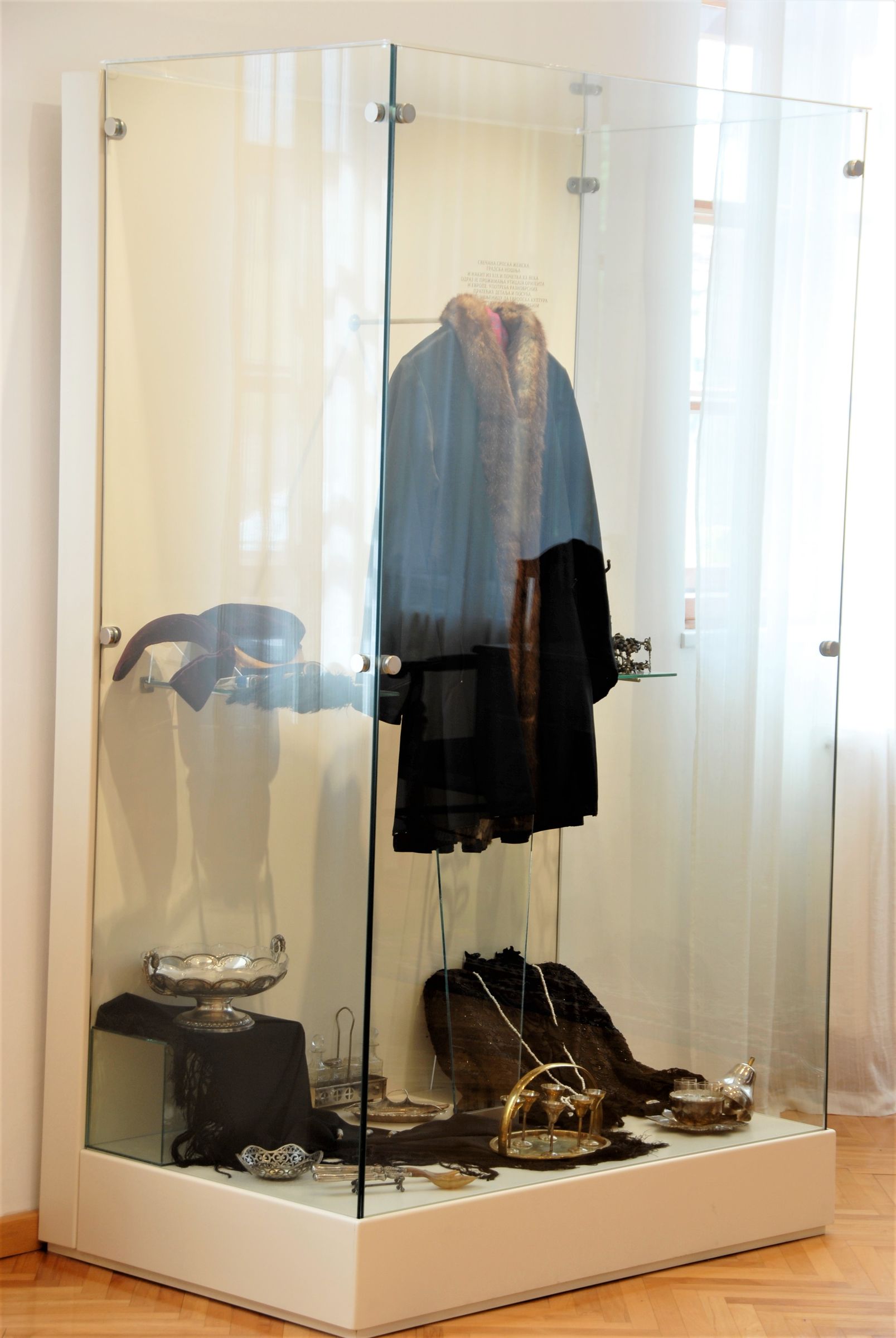
About the Permanent Exhibition
Upon the completion of adaptation of the old school building into a modern museum space (2006), the National Museum in Kraljevo realised a complex permanent exhibition, which was opened on May 16th, 2008, after two years of work carried out by the complete team of museum experts from the National Museum Kraljevo and managed by the director Dragan Drašković. The entire first floor of the building which covers four halls and a corridor along both wings of the building was intended for permanent exhibition. The permanent exhibition of the National Museum Kraljevo provides a general insight into the history of Kraljevo and its surroundings. The curators, i.e. authors of the exhibition, adjusted their ideas to the possibilities offered by the space: the visitor goes upstairs to the hallway; the right wing of the building is dedicated to a separate Hall of Archaeology, which is chronologically connected with the Hall of War History of Kraljevo and its surroundings, while the corridor in this wing of the building is closed into a Memorial Room dedicated to the victims of the mass shooting in Kraljevo in October 1941, one of the most tragic events in the past of the city; the left wing of the building consists of a hall which presents the political and cultural history of Kraljevo (development of its local administration, trade, crafts, banking, health care, church, education and the connection between the town and the Obrenović and Karađorđević dynasties), the Legacy of Olivera Radojković Čolović in the corridor, and the Hall of Ethnology which presents the formation and Europeanisation of the bourgeoisie during the 19th and 20th centuries.
At first sight, the permanent exhibition of the National Museum Kraljevo retains the classical concept of presenting the course of history from the oldest periods towards modern times, but rather as an external framework enabling visitors to be aware of the general line of development within which there are a large number of topics. The exhibition offers not only the cognitive aspect of history of the specific city and its surroundings, but it also shows that a museum can be a place which preserves the knowledge from the past, human memories and emotions, where new ideas are created or where one can discover that the world around us offers much more challenges than we can imagine. A year later, i.e. in 2009, the Serbian Museum Association granted its most prestigious award – “Mihailo Valtrović” to this project.
During its 12 years of existence, the exhibition has changed with the introduction of new elements, i.e. as living tissue of the museum, it has developed with the course of time and in accordance with new investigations and acquisition of new exhibits, as well as through the constant work with the public. It has become accessible to the disabled, and a special video guide has been recorded for the deaf and hard of hearing.

Archaeology Hall
A specific thematic concept (archaeology as a science) has been chosen in the Hall of Archaeology, where the global print covering the large wall of the hall is the holder of communication with the public, including the original material and various details which encourage the visitor to participate. The exclusive exhibits are placed laterally in highly aestheticised cupboards on specially made murano glass supports.
The oldest settlements originated in the sixth millennium B.C. and are located by the east and west sides of the city, in the villages of Čukojevac and Konarevo, with the dwellings semi-buried in the grounds and population which dealt with farming, processing and trade in stone raw material and tools. At the end of the Neolithic, in a settlement in Ratina, the inhabitants of the Vinča culture built their houses above the ground, with painted walls, experimenting with the first copper ores and thus opening the door to the technology of the Metal Ages. The settlements of the Early Iron Age surround Kraljevo in a large number (Konarevo, Karadjordjeva Street, Kovanluk), while a headman’s grave with luxurious material was found in Kruševica near Raška.
The arrival of the Romans and early Romanisation of the autochthonous population were confirmed by the excavations in Konarevo, Čukojevac and Korlaće near Baljevac on the Ibar, thus showing the presence of the Roman administration from the establishment of the province of Upper Moesia in the 1st century A.D. There was a significant boom in the Ibar valley, where, in the period of the late empire, the mining-metallurgical activity was intensified, before all, on the mountain of Kopaonik, in search of precious metals which would reduce the financial crisis of the dying state.
After the Migration Period, the Slavs occupied Byzantine territories, including the Ibar valley. The first burial gifts, bronze and silver earrings, which originated in the period from the 10th to the 12th centuries, unequivocally show the presence of the Serbian population. The history of the mediaeval state of the Nemanjićs, in which the Raška School art developed, began exactly in this territory when Studenica, the foundation of the Grand Prince Stefan Nemanja, was built. Soon after the construction of Studenica, hidden in the hills of Čemerno, in a fertile valley where the Ibar flows into the Morava, Nemanja’s son Stefan built his foundation – Žiča, the seat of the first Serbian archbishopric and a new coronation place. The number of mapped and excavated graveyards creates an impression that there was a dense network of settlements with a proportionally large number of inhabitants in the surroundings of the archbishopric. The founder of Žiča, King Stefan the First-Crowned, secured the independent life and development of the monastery by donating 57 villages and hamlets to it by means of the charter inscribed on the walls of the entrance tower; the names of the villages and hamlets can be easily recognized even today. On the other hand, Žiča, as the seat of the church and the state, was attacked by numerous enemies and its later history was the history of suffering and seven renewals, the last destruction being caused by the German bombing in October 1941.
Within this wide chronological framework, the public is encountered with an intriguing heritage and a lot of interesting topics.
Authors of the exhibition: Vera Bogosavljević Petrović, Tatjana Mihailović
Associate: Slađana Spasić
External associates: Slobodan Marinković, applied artist; Goran Ristanović Pokimica, filigree

War History Hall
Kraljevo, which developed by the monastery of Žiča, the mediaeval centre of Serbian spirituality and statehood, suffered for centuries together with its sacred place in all war events. Kraljevo and Žiča were defended and liberated in fierce battles. Called by their fatherland when it was in danger, the people from Kraljevo responded massively and returned from the wars with the belief that they would live in peace, renewing and building Kraljevo and Žiča, which always filled them with strength, belief and hope.
In the hall dedicated to the history of war events in the surroundings of Kraljevo, the oldest material belongs to the late Middle Ages and the early Ottoman occupation, when Maglič, as a fortress, retained its military-administrative importance. It housed the permanent Ottoman crew with a dizdar at their head, all until the signing of the Treaty of Požarevac in 1718 and establishing of the Austrian-Ottoman border along the West Morava, when this role was assumed by Karanovac. The uprisings and rebellions of Serbs in the period 1804–1815, which did not pass by Karanovac, make another important segment of the exhibition. The development of communication lines increased the strategic importance of the place, so that the standing army in Karanovac developed into a garrison. It allowed the town to obtain its first doctor and a military hospital in 1837, as well as the pontoon bridge in 1876 and other facilities. The central part of the hall is dedicated to the wars for liberation and uniting with the southern regions and for freedom: Serbian-Turkish Wars (1876–1878), Balkan Wars (1912–1913) and the First World War (1914–1918), in which Kraljevo and the people of Kraljevo participated, suffered and liberated their town.
Kraljevo had not even managed to recover from the previous war suffering by the time the new world war began two decades later, with terrifying consequences for the town. The last part of the exhibition refers to that period, which is characterised by: stationing of the German army in Kraljevo, as an important centre of communication lines and an important regional centre; inflow of refugees from Slovenia, Independent State of Croatia and Kosovo, among which the most touching scene was the arrival of starving and sick Serbian children, who were accommodated in the refugee shelters in Mataruška Banja; joint attacks of partisan and chetnik forces striving to liberate the town, which incited the response – mass shooting of civilians (special hall) preceded by the bombing of Žiča and the arrest of Bishop Nikolaj Velimirović. Finally, in 1944, the allies cruelly bombed Kraljevo, turning it into ruins. Kraljevo was liberated on November 29th, 1944 by the joint operations of the Red Army and the units of the Yugoslav National Liberation Army. At the very end of the 20th century, during the NATO bombing of the Federal Republic of Yugoslavia, Kraljevo was among the targets from the first to the last day.
Authors of the exhibition: Dragan Drašković, Silvija Krejaković
Associate: Mirjana Savić

Memorial Room for the Victims of Shooting in Kraljevo in October 1941
The shooting of hostages in the lager in Kraljevo from October 15th to 20th, 1941 is the most tragic fragment in the history of the city, deeply carved in the consciousness of generations, like a birthmark. In accordance with Hitler’s guidelines and orders of the commanding generals and inspired by the losses inflicted by the joint attacks of partisan-chetnik units in their attempts to liberate Kraljevo, the German army detained more than 2000 hostages in a large locomotive hall within the Railway Workshop, in the space called lager. The proportion unheard of in the history of warfare, about shooting 100 Serbs (civilians) for 1 killed, 50 for 1 injured German soldier, were made concrete with the introduction of the state of emergency and the court martial in Kraljevo from October 15th, 1941, when the mass shooting of civilians in the lager started. The cruelty of the crime against the civilians in the lager committed by the 717. Wehrmacht infantry division was demonstrated on 2.190 hostages, whose names and surnames are recorded in historical sources, but also through the collective tragedy of families which were left without their breadwinners, the city without its people who were in their prime, war orphans, devastated economy.
A special part of the permanent exhibition is dedicated to the victims of the German reprisal against the citizens of Kraljevo in October 1941, as a room of memories and remembrance. After ten years of work on the database of victims, the National Museum Kraljevo published a unique edition, the Remembrance Book naming the victims shot in the lager, in which each victim, known by their name and surname, got its page in this black book of tragedy, divided into four volumes.
Author of the exhibition: Silvija Krejaković

Hallway
Along the staircase which leads to the Hallway of the permanent exhibition, there is a part dedicated to Vladislav Maržik, first educated painter from Kraljevo, who is marked as a passionate chronicler of daily changes in the appearance of the town. His paintings recorded the first hospital, post office, first museum building and many parts of the city which do not exist any more. Hence, his drawings, which can be used for reconstruction of the appearance of Kraljevo in the past, make an introduction to the permanent exhibition, which occupies the entire first floor of the museum building. In the Hallway, there is a large niche, which has changed its content in the course of time, so originally it was a classroom, thus establishing the link with the primary purpose of today’s Museum building. In the meantime, the National Museum Kraljevo received a large donation, so that today this niche accommodates a drawing room, donated by Nikola Jončić. In the Hallway, there is also a part dedicated to family life, as a kind of introduction to the Hall of Social History. To the right of the hall, one can enter the Hall of Archaeology, Hall of War History and the Memorial Room for the victims of shooting in October 1941. These three halls make the right wing of the building. In the left wing, from the Hallway one can enter the Hall of Social History and an open corridor, which has also changed its display twice. Firstly, it was dedicated to urban planning and organised as the main street of Kraljevo. But, after this space had been damaged in the earthquake of November 3rd, 2010 and then reconstructed, a part of the legacy of Olivera Radojković Čolović was placed there and it is currently under reconstruction. From the corridor, one can enter the Hall of Ethnology, which is also dedicated to bourgeois life and which makes a counterpart of the Hall of History in the left wing of the building.
Authors of the exhibition: Suzana Novčić, Dragan Drašković

Social History Hall
The shortest historical presentation of Kraljevo refers to its names, which were changed several times in the past: Rudo Polje (from 1476), Rudo Polje or Karanovac (1540–1572), Karanovac (from 1572), Kraljevo (from 1882), Rankovićevo (from 1949) and Kraljevo (since 1955).
According to a story, the beginning of urban development of Kraljevo is connected with Prince Miloš, who drew a circular square in a baking dish filled with sand. What we know as a fact is that Laza Zuban designed the plans of Požega and Karanovac in 1832 and classified Kraljevo among the first places in Serbia with the urban development plan. Hovels and alleys gave way to a well-organised town with diverse craft and trade shops, which was visited by the rulers of both dynasties of the modern period. The construction of the road Kraljevo – Raška in 1883 and the construction of the narrow gauge railway on the route Stalać – Kraljevo – Čačak in 1910/11 made a large contribution to the development of the town. The settlement with 116 households seen by Joakim Vujić in 1826, entered the 20th century with 610 houses and 3238 inhabitants, and already in 1931 it had 1636 houses and 7022 inhabitants. During the 20th century, Kraljevo grew into an urban settlement with all features of a significant administrative, trade, craft, industrial, traffic, healthcare, school and cultural centre. The exhibition, with its 10 segments, tends to present the most important parts of these fields of social life, i.e. development of the bourgeois epoch in Kraljevo in all its aspects.
Author of the exhibition: Dragan Drašković
Associate: Mirjana Savić

Ethnology Hall
The historical events in the 19th century and at the beginning of the 20th century led to the changes in all fields of life in Serbia. The wish for emancipation and Europeanisation was increasingly intensive. In Kraljevo, as in the other towns of Serbia, wealthy tradesmen, craftsmen, young people educated in Western European centres gradually accepted new habits, a new model of behaviour, a new fashion and way of life in general. The exhibited objects, elements of bourgeois culture from the end of the 19th century and the beginning of the 20th century refer to the organisation and furnishing of residential and business premises, household items and dishes. A special impression is made by the costume of women living in the town and jewellery from the mentioned period, both in typological and stylistic senses, as well as by its opulence and indisputable aesthetic and artistic values. The clothes and jewellery, as reflections of economic and political events, the spirit of the epoch, time and territory in which they were created, reveal ethnical and cultural specificities, various influences and mutual permeation. By this exhibition, the Ethnological Department of the National Museum in Kraljevo wants to allow its visitors to get back, at least for a moment, to the past, to Kraljevo from the end of the 19th century and the beginning of the 20th century.
Author of the exhibition: Tijana Šibalić



























